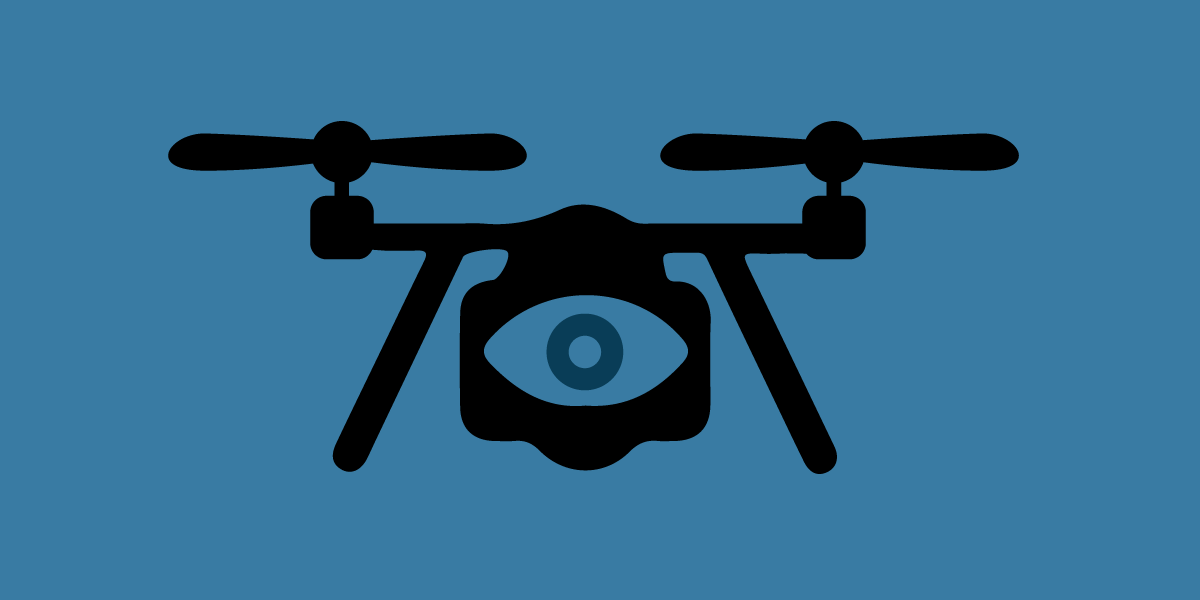As governments search in vain for a technological silver bullet that will contain COVID-19 and allow people to safely leave their homes, officials are increasingly turning to drones. Some have floated using them to enforce social distancing, break up or monitor places where gatherings of people are occurring, identify infected people with supposed “fever detecting” thermal imaging, or even assist in contact tracing by way of face recognition and mass surveillance.
Any current buy-up of drones would constitute a classic example of how law enforcement and other government agencies often use crises in order to justify the expenditures and negate the public backlash that comes along with buying surveillance equipment. For years, the LAPD, the NYPD, and other police departments across the country have been fighting the backlash from concerned residents over their acquisitions of surveillance drones. These drones present a particular threat to free speech and political participation. Police departments often deploy them above protests, large public gatherings, and on other occasions where people might practice their First Amendment-protected rights to speech, association, and assembly.
The threats to civil liberties created by drones increase exponentially if those drones are, as some current plans propose, equipped with the ability to conduct face surveillance. If police now start to use drones to identify people who are violating quarantine and walking around in public after testing positive for COVID-19, police can easily use the same drones to identify participants in protests or strikes once the crisis is over. Likewise, we oppose the attachment of thermal imaging cameras to government drones, because the government has failed to show that such cameras are sufficiently accurate to remotely determine whether a person has a fever. Yet, police could use these cameras to identify the whereabouts of protesters in public places at nighttime.
Some have suggested that drones may be a useful way of monitoring the density of gatherings in a public places, like a jogging areas, or as a safer alternative to sending an actual person to determine crowd density. EFF has clear guidelines to evaluate such proposals: Would it work? Is it too invasive? Are their sufficient safeguards? So to start, we’d want to hear from public health experts that drones would be effective for this purpose. Further, we’d want guarantees that such drones are part of a temporary public health approach to social distancing, and not a permanent criminal justice approach to gatherings in public places. For example, there would need to be guidelines that would only allow public health officials, rather than law enforcement, access to the drones. The drones should also never be equipped with face recognition or inaccurate “fever detecting” thermal cameras. They should not be used to photograph or otherwise identify individual people. No government agencies should use this moment to purchase new drones, which ensures that agencies would find excuses in the future to use the drones for other purposes, in order to justify the initial expense. We don’t want more government drones flying over concerts and rallies in the not-so-distant future.
Police surveillance technology is disproportionately deployed against people of color, undocumented people, unhoused individuals, and other vulnerable populations. Having drones become part of the criminal justice apparatus, rather than being controlled by public health officials with no punitive focus, runs the risk of new over-policing of already over-policed neighborhoods and increasing the racially biased dissemination of fines, summonses, and in-person harassment. If drones must be deployed at all, they need firm guardrails to avoid disproportionately impacting specific communities.
As always, local police and public health officials should not acquire new surveillance technologies, or use old surveillance technologies in new ways, without first asking for permission from their city councils or other legislative authorities. Those bodies should hear from the public before deciding. If the civil liberties costs outweigh the public health benefits, new spy tech should be rejected. During the COVID-19 crisis, community control of government surveillance technologies, including drones, is more important than ever.
Even in a time of crisis, we must not normalize policing by robot. Videos of Italian mayors using drones with speakers to shout at people defying shelter-in-place orders are supposed to be funny, but we find them alarming. People often turn toward first responders at the worst moments of their lives. We should not be getting people used to, or even amused by, outsourcing more and more of the necessary human side of policing to robots.











